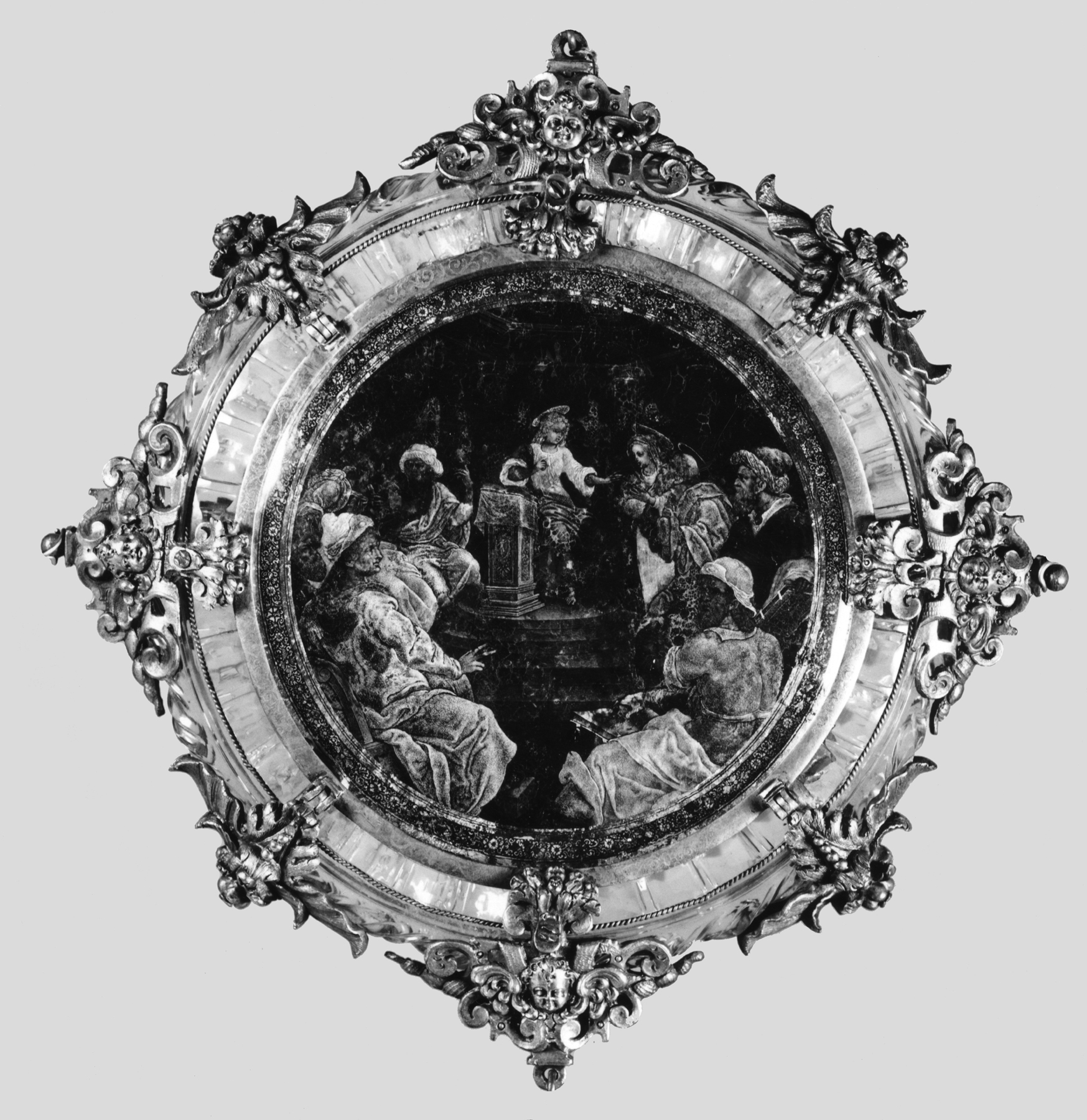Plaque with the Annunciation
(Baroque Europe )
Polished rock crystal here provides an elegant transparent support for a fine example of the technique of reverse painting. This involved first applying a layer of gold leaf which was partially scratched away, so that the layer of translucent, colored resins applied behind it is revealed. The red is particularly vibrant. Over the resin was applied a layer of reflective silver foil covering the back of the composition and lending the colors of the resin a gem-like luminescence.
This technique was popular for refined works of art collected at Northern European courts, especially in Germany. The compositonal style reflects the Italian training of so many Northern artists of this period.
Provenance
Provenance (from the French provenir, 'to come from/forth') is the chronology of the ownership, custody, or location of a historical object. Learn more about provenance at the Walters.
Henry Walters, Baltimore, 1920 [mode of acquisition unknown]; Walters Art Museum, 1931, by bequest.
Exhibitions
| 1982 | 3000 Years of Glass: Treasures from The Walters Art Gallery. The Walters Art Gallery, Baltimore. |
Conservation
| Date | Description | Narrative |
|---|---|---|
| 7/2/1952 | Treatment | cleaned; coated |
| 3/17/1958 | Treatment | cleaned; coated |
| 2/1/1982 | Treatment | cleaned |
| 5/5/1988 | Treatment | cleaned |
| 5/6/1988 | Examination | examined for condition |
Geographies
Italy
(Place of Origin)
Germany (Place of Origin)
Measurements
9 3/16 x 9 3/16 in. (23.3 x 23.3 cm)
Credit Line
Acquired by Henry Walters, 1920
Location in Museum
Accession Number
In libraries, galleries, museums, and archives, an accession number is a unique identifier assigned to each object in the collection.
In libraries, galleries, museums, and archives, an accession number is a unique identifier assigned to each object in the collection.
46.9




